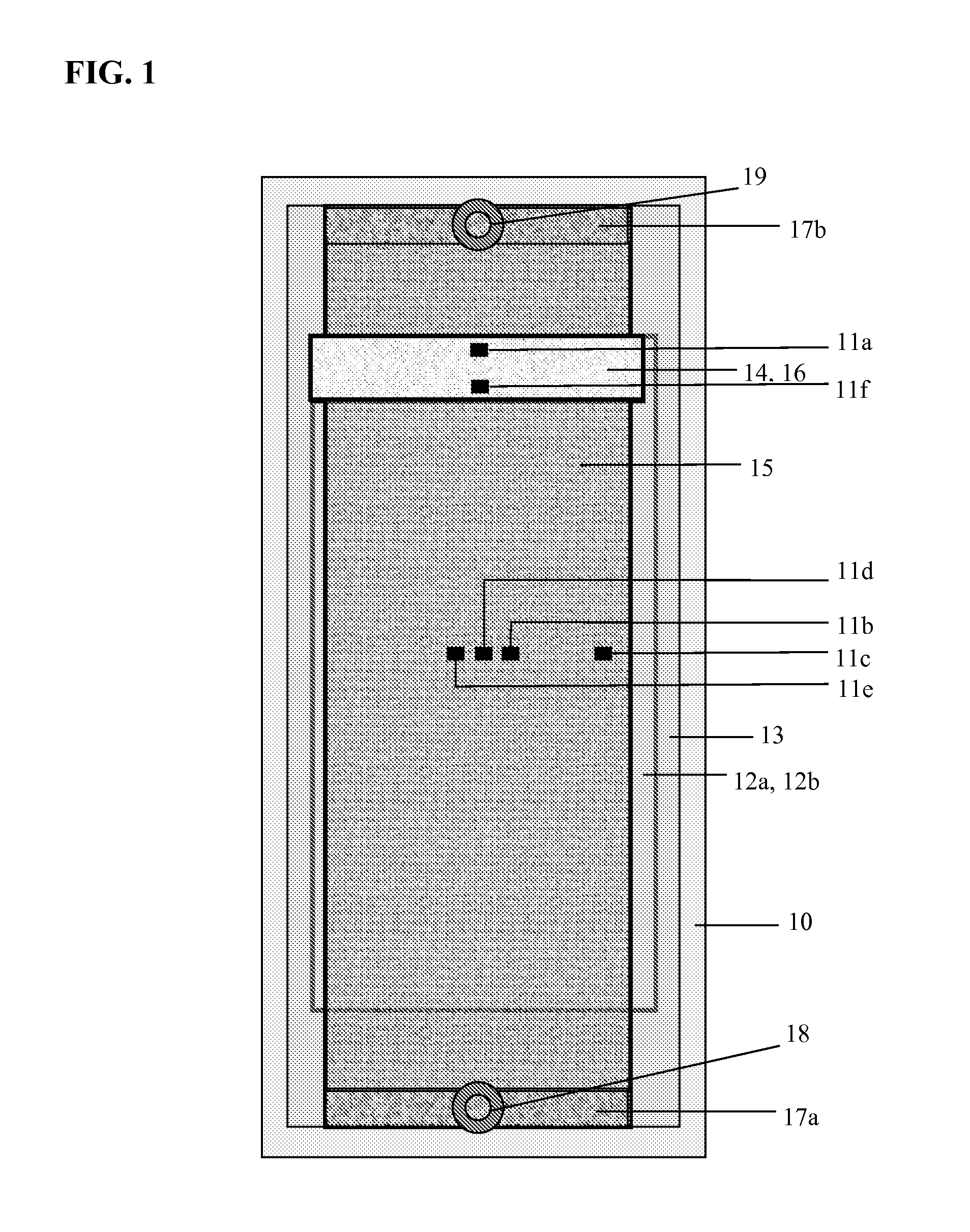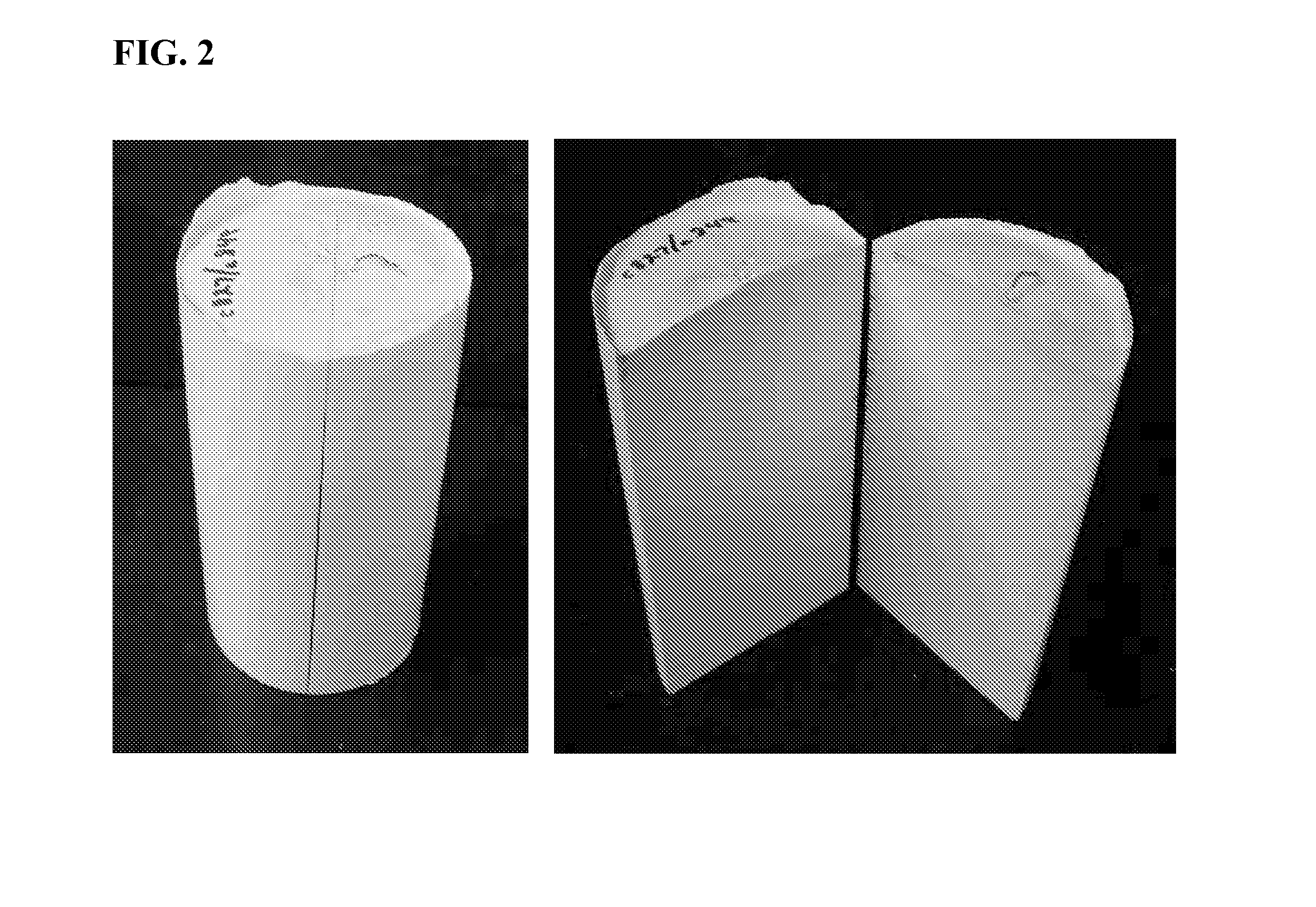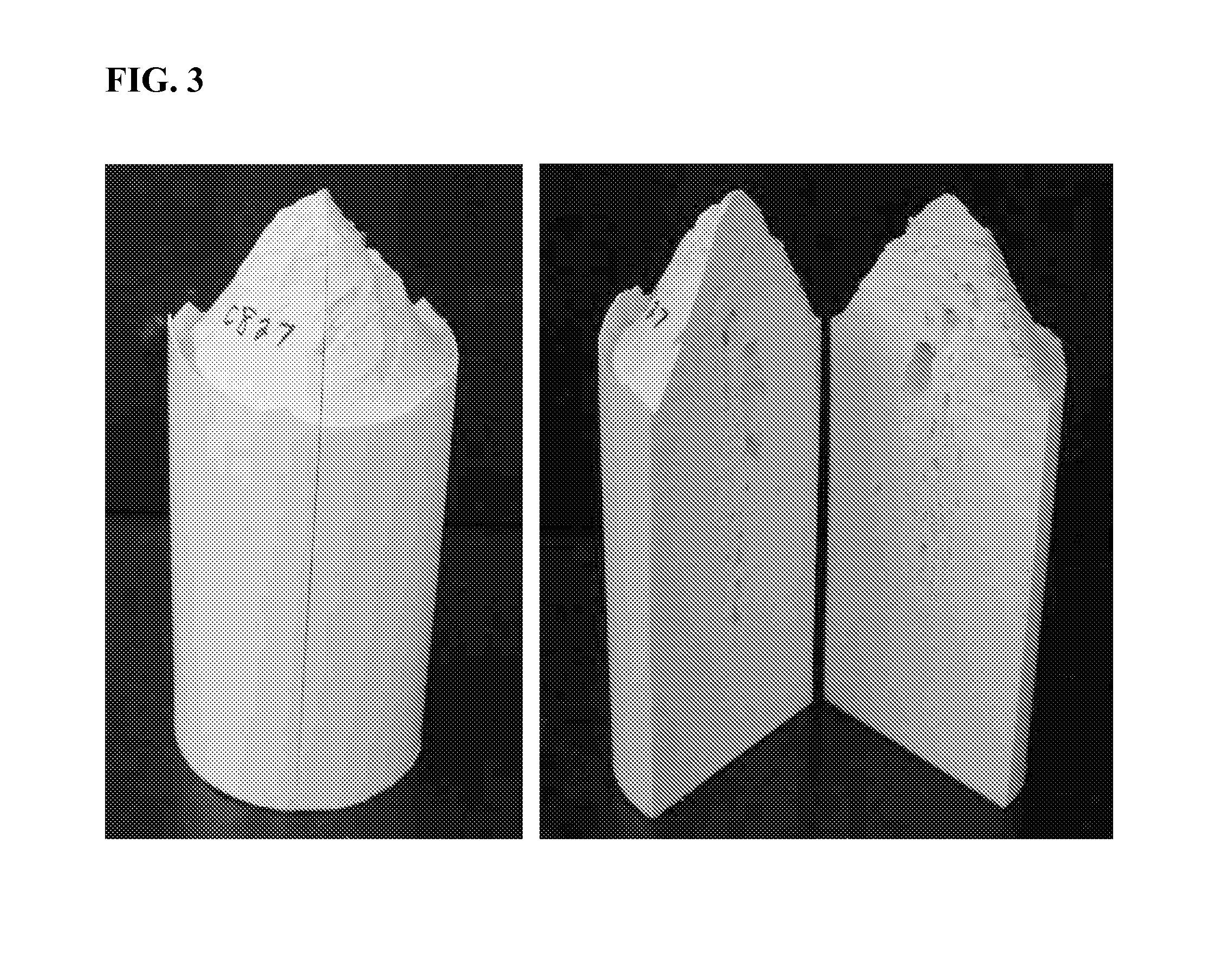Olefin metathesis catalyst compositions comprising at least two metal carbene olefin metathesis catalysts
a technology of olefin metathesis and catalyst composition, which is applied in the direction of organic compound/hydride/coordination complex catalyst, physical/chemical process catalyst, chemical apparatus and processes, etc., can solve the problems of increased manufacturing costs, defects in molded articles, and inability to mold a wide array of polymer articles, etc., to achieve the effect of eliminating the volatilization of liquid cyclic olefin monomer
- Summary
- Abstract
- Description
- Claims
- Application Information
AI Technical Summary
Benefits of technology
Problems solved by technology
Method used
Image
Examples
examples
Materials and Methods
[0380]All glassware was oven dried and reactions were performed under ambient conditions unless otherwise noted. All solvents and reagents were purchased from commercial suppliers and used as received unless otherwise noted.
[0381]Ultrene® 99 dicyclopentadiene (DCPD) was obtained from Cymetech Corporation. A modified DCPD base resin containing 20-25% tricyclopentadiene (and small amounts of higher cyclopentadiene homologs) was prepared by heat treatment of Ultrene® 99 DCPD generally as described in U.S. Pat. No. 4,899,005.
[0382]Liquid MDI (50 / 50 mixture of 4,4′-MDI and 2,4′-MDI) was used as received from Bayer Material Science (Mondur® MLQ) and was used where indicated. Ethanox® 4702 antioxidant (4,4′-methylenebis(2,6-di-tertiary-butylphenol), Albemarle Corporation, was used where indicated. Crystal Plus 70FG mineral oil (STE Oil Company, Inc.), containing 2 phr Cab-o-sil® TS610 fumed silica (Cabot Corporation), was used to prepare the catalyst suspensions. Triph...
examples 1-24
Viscosity Measurements
[0392]For each Example 1-24, Resin composition (A) (204.0 grams) was added to a 250 mL plastic bottle. The resin composition was allowed to equilibrate to 30° C.+ / −0.5° C. in a heating bath. The appropriate catalyst suspension (1S-10S; 23S-29S; 35S-41S) (4.0 grams) was combined with the resin composition to form a ROMP composition. Viscosity measurements of the ROMP compositions were obtained at 30° C. using a Brookfield Viscometer (Model DV-II+Pro), spindle (Model Code S62) at a speed of 150 RPM. Time to viscosity of 30 cP is defined as the time required for the ROMP composition to reach a viscosity of 30 cP following catalyzation of the resin composition. The time to viscosity of 30 cP is shown in Table 5.
[0393]Gel Hardness Measurements:
[0394]For each Example 1-23, Resin Composition (A) (20.4 grams) was allowed to equilibrate to 30° C.+ / −0.5° C. in a standard laboratory oven. The appropriate catalyst suspension (1S-10S; 23S-29S; 35S-40S) (0.4 grams) was combi...
examples 25-42
Viscosity Measurements
[0397]For each Example 25-42, Resin composition (A) (204.0 grams) was added to a 250 mL plastic bottle. The resin composition was allowed to equilibrate to 30° C.+ / −0.5° C. in a heating bath. The appropriate catalyst suspension (11S-18S; 30S-32S; 42S-48S) (4.0 grams) was combined with the resin composition to form a ROMP composition. Viscosity measurements of the ROMP compositions were obtained at 30° C. using a Brookfield Viscometer (Model DV-II+Pro), spindle (Model Code S62) at a speed of 150 RPM. Time to viscosity of 30 cP is defined as the time required for the ROMP composition to reach a viscosity of 30 cP following catalyzation of the resin composition. The time to viscosity of 30 cP is shown in Table 6.
[0398]Gel Hardness Measurements:
[0399]For each Example 25-42, Resin Composition (A) (20.4 grams) was allowed to equilibrate to 30° C.+ / −0.5° C. in a standard laboratory oven. The appropriate catalyst suspension (11S-18S; 30S-32S; 42S-48S) (0.4 grams) was c...
PUM
| Property | Measurement | Unit |
|---|---|---|
| viscosity | aaaaa | aaaaa |
| viscosity | aaaaa | aaaaa |
| temperature | aaaaa | aaaaa |
Abstract
Description
Claims
Application Information
 Login to View More
Login to View More - R&D
- Intellectual Property
- Life Sciences
- Materials
- Tech Scout
- Unparalleled Data Quality
- Higher Quality Content
- 60% Fewer Hallucinations
Browse by: Latest US Patents, China's latest patents, Technical Efficacy Thesaurus, Application Domain, Technology Topic, Popular Technical Reports.
© 2025 PatSnap. All rights reserved.Legal|Privacy policy|Modern Slavery Act Transparency Statement|Sitemap|About US| Contact US: help@patsnap.com



